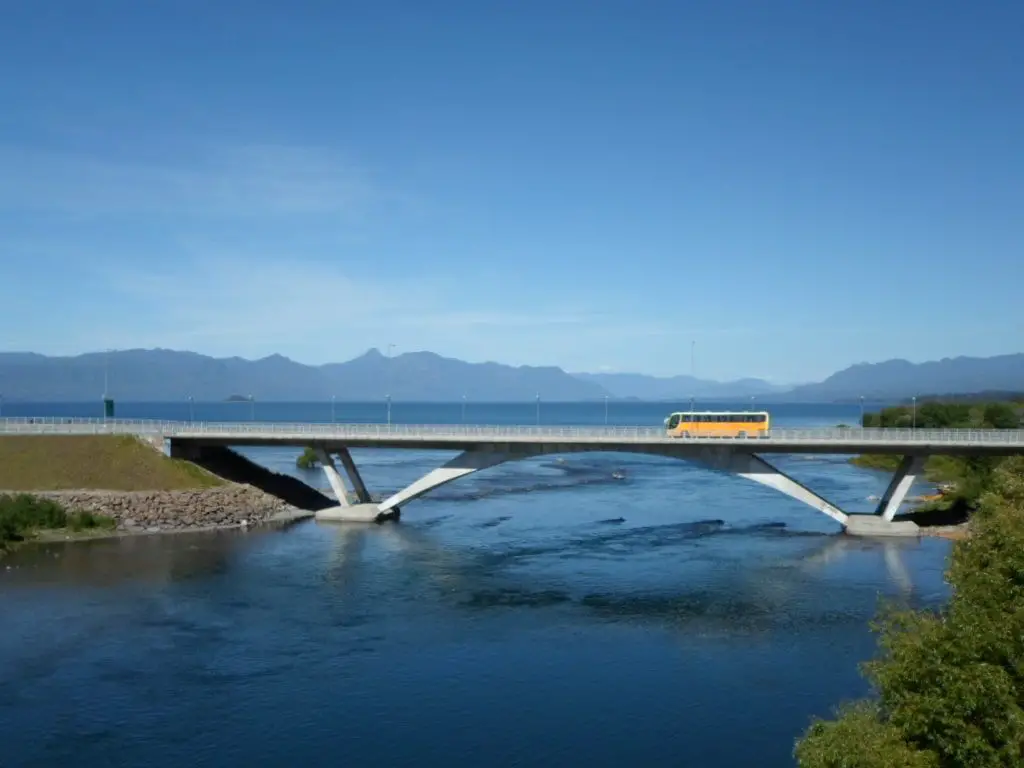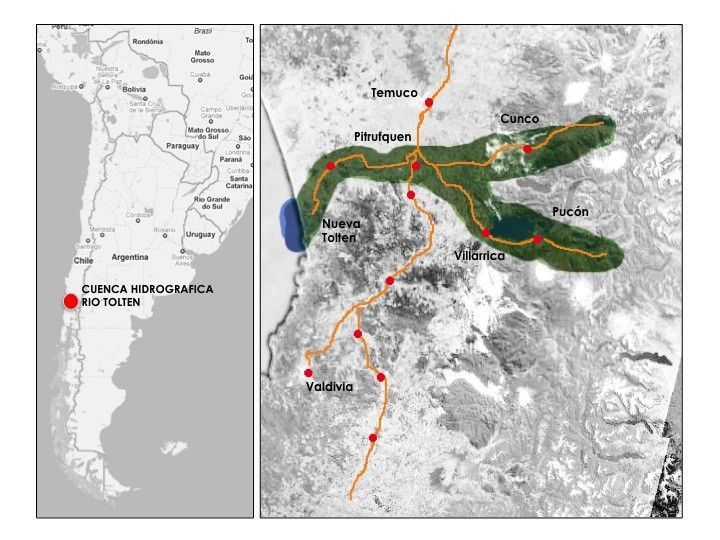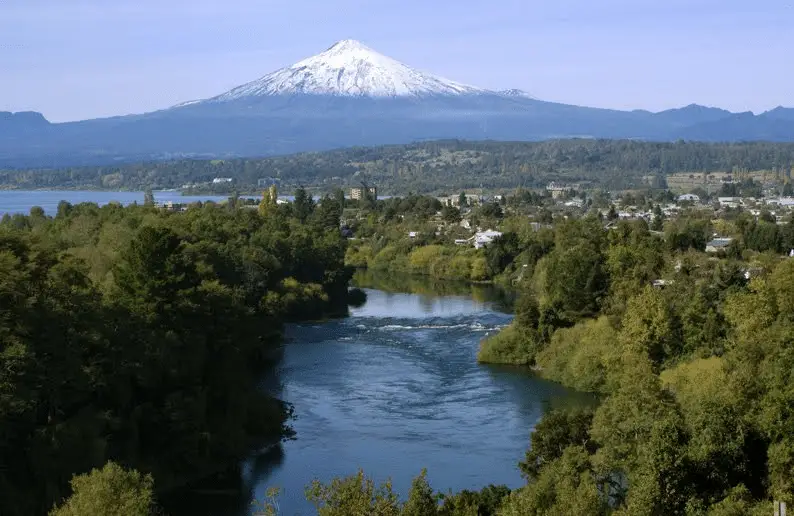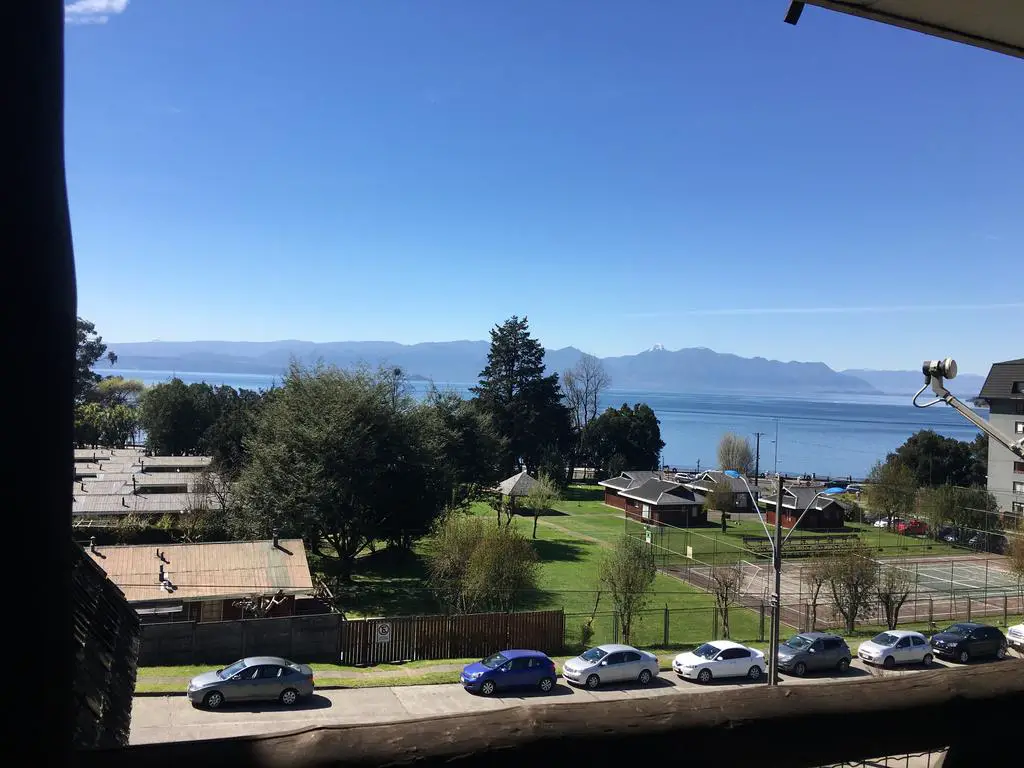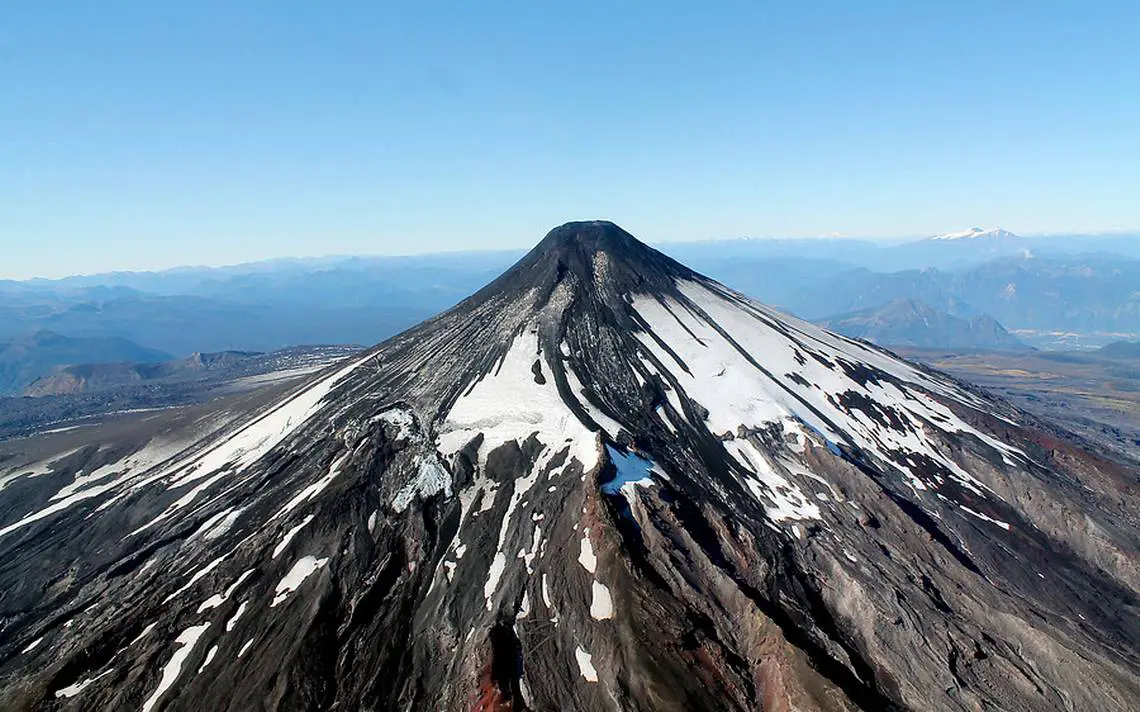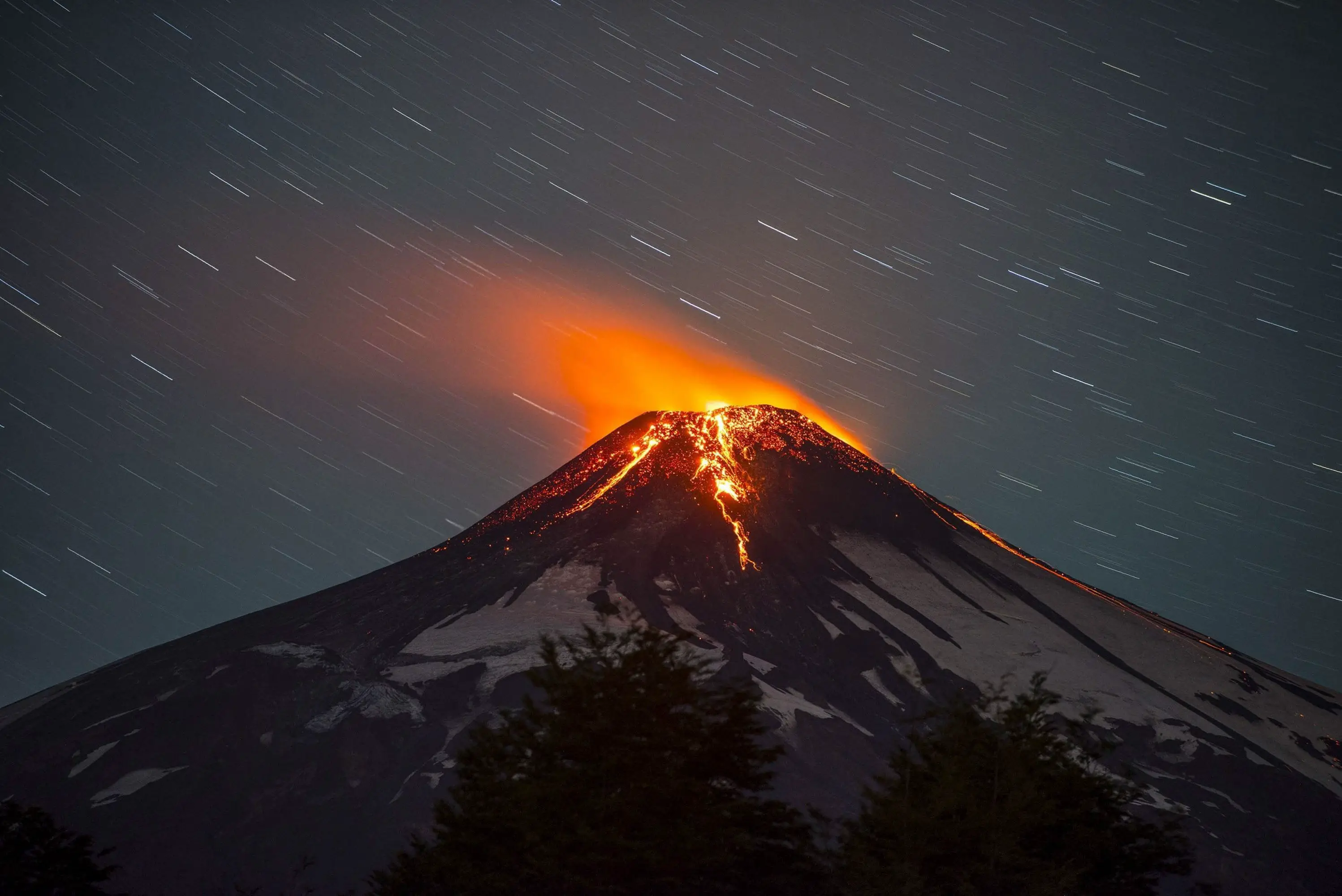It runs east-west through part of southern Chile and was once the border between the Huiliches and Mapuches (see: Río Manso), indigenous ethnic groups of Chile and Argentina. Since we’re talking about the Tolten River, let’s take a look at some important facts about it.
Indice De Contenido
Location and map of the Tolten River
It has a length of almost 200 km and a basin of 7886 km2, stretching from Lake Villarrica to Punta Nigue or Punta Nihue in the Pacific Ocean. It is perfectly navigable and suitable for sport fishing.
View map
Mouth of the Tolten River
Punta Nigue or Nihue is located on the Pacific Ocean and is a prominent part of the mouth of the Tolten River. In ancient times there was a spring to which the natives attributed some magical powers. Nowadays, in 2006, this area was declared by the Chilean Ministry of Defence as a “coastal area reserved for preferential port use…”.
Population along the river
Along the banks of the river there are towns of commercial, industrial and tourist importance. Some of these are listed below.
Villarrica: Located on the shores of the lake of the same name, it is a thriving town with all public services; it is the main tourist centre thanks to its coastline with exquisite beaches that bear witness to the presence of the lake and the Villarrica volcano. It is the venue for various artistic, sporting and cultural events, and above all for ecological, rural and adventure tourism (see: Trancura River).
Pitrufquen: Chilean city, also in the province of Cautin, where different cultures converge due to the large number of immigrants, such as Italians, Belgians, Germans, Dutch, French, Swiss and Hungarians, in addition to its Spanish and Mapuche origins (see: Futaleufu River).
Places of interest on the Tolten River
The Tolten River has in its basin sites that amaze the visitor and the national and/or foreign tourists who visit it. From lakes, parks, volcanoes, ports, it is a mixture of landscapes, cultures and many colours that delight the lucky tourist.
Villarrica Volcano
Located on the border of Cautin and Valdivia in Chile, its almost perfect cone shape and constant activity make it one of the most famous volcanoes in South America. Its crater is close to towns such as Villarrica, Pucón, Coñaripe, Lican Ray and other less densely populated rural villages with hot springs and potential tourist sites.
Lake Villarrica
Lake Villarrica is the source of the Tolten River in the province of Cautin, the ninth (IX) region of Araucania in Chile. Cautin is joined by the province of Malleco to form this region, which in turn includes the cities of Temuco, Angol, Villarrica, Victoria, Lautaro and Pucon. Chile is divided into fifteen regions.
IX Region of Araucanía
This region is rich in natural resources such as agriculture, livestock, fishing, volcanoes, ancient forests, lakes, hot springs, ski resorts, lakes, rivers and mountains. Its Chinook salmon species are highly prized by amateur fishermen (see: Trancura River).
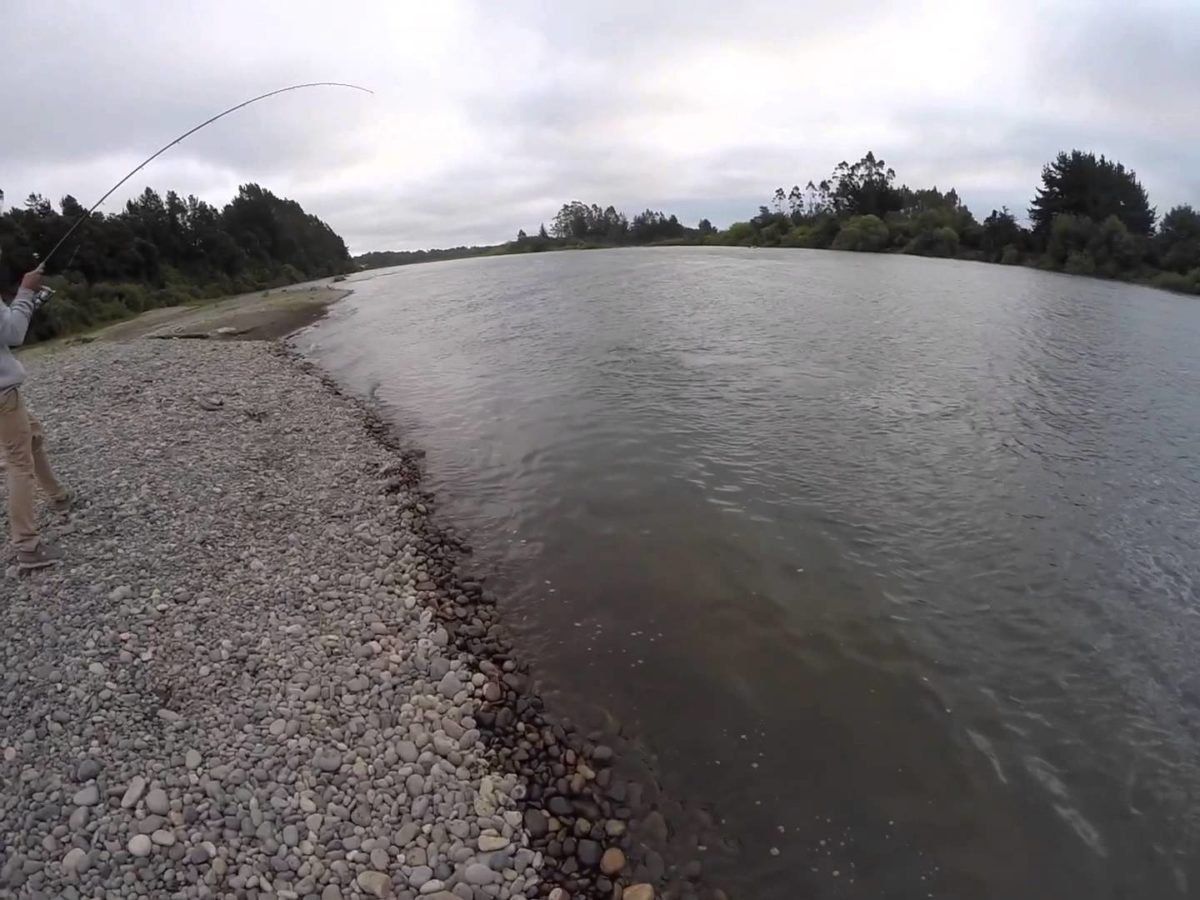
Activities on the Tolten River
Given the high number of ecological, rural, hiking, adventure and fishing enthusiasts, events are organised to showcase Chile’s wealth in terms of tourism, trade, agriculture and industry.
Fishing in the Tolten River
The Tolten River is a paradise for sport and amateur fishermen, because its waters are suitable for this exciting activity, as well as the quality and size of its fish, among which the salmonidae stand out, including the Chinook salmon, a prized jewel, and the rainbow trout, fario, of large size and prized flesh.
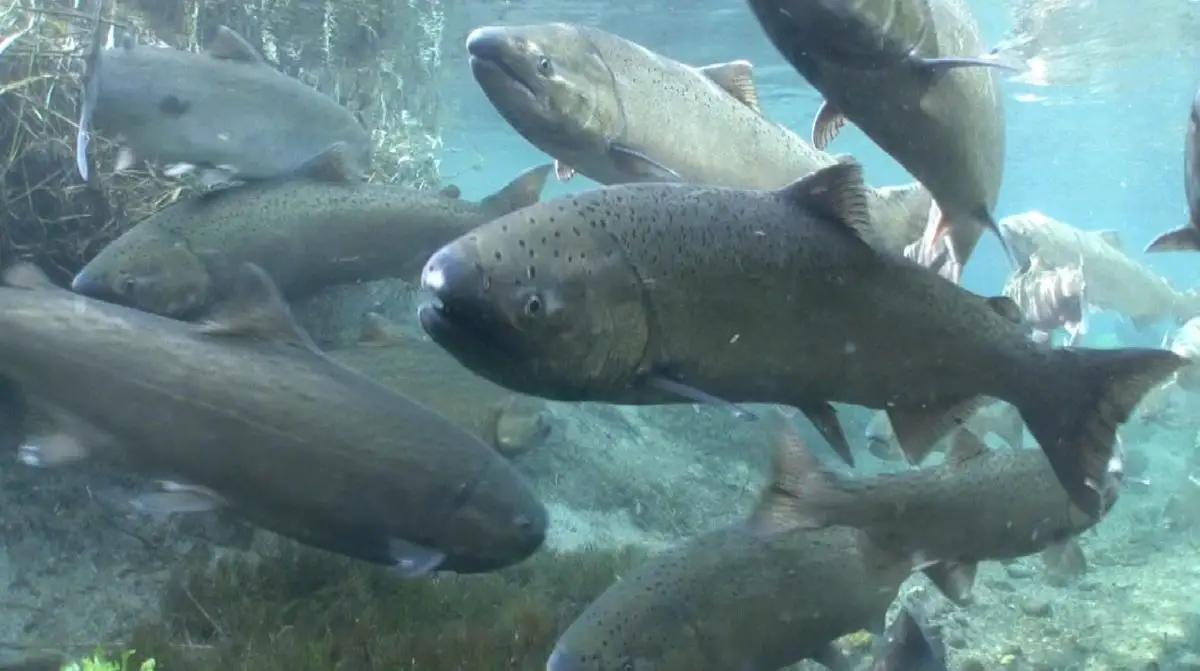
Ecological, rural and adventure tourism
The tourism sector in Chile has grown considerably in the last decade, and it can be said that it is an important export sector, which has generated extraordinary income to date, standing out from the salmon and wine markets. The fact that Chile has large areas of natural attractions has increased the number of ecological, rural and adventure tourists.
Rural or ecological tourism
The rural tourist takes advantage of the opportunity to get to know the natural environment and its inhabitants, as well as the relationships between them and their way of life. It is an advantage for these settlers that these visitors occupy their inns, prepare events or sports competitions at certain times of the year, as they create sources of employment and thus income, which is beneficial both to the settler and to the State in general.

